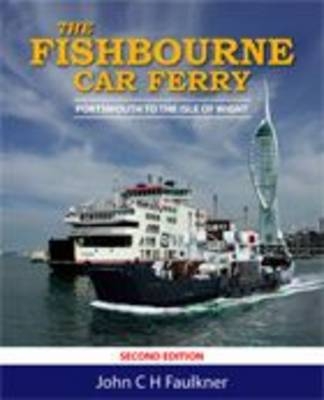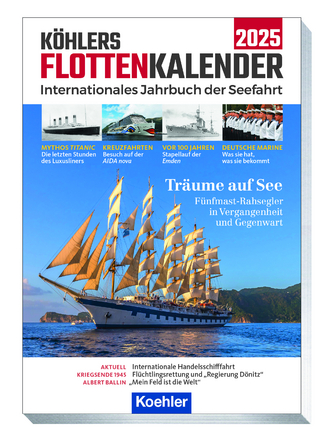
The Fishbourne Car Ferry
Colourpoint Books (Verlag)
978-1-904242-87-1 (ISBN)
- Titel ist leider vergriffen;
keine Neuauflage - Artikel merken
Introduction - 15 March 1926 saw the opening of a new six-mile car ferry service between Portsmouth and the Isle of Wight. The Island terminal was situated at the mouth of Wootton Creek, in the tiny village of Fishbourne. Remote from the main Ryde to Newport road, the community comprised little more than a cluster of houses and an inn surrounding a pleasant circular green with a large oak tree at its centre. Today, Fishbourne is the principal gateway to the Isle of Wight; the village, however, is still bereft of a shop and has no other public transport links. The ferry service, which became popularly known as the Fishbourne car ferry by Island residents, remained a secondary route for the first thirty-five years of its life, but since the early 1960s it has grown at a phenomenal rate. As more and more people became car owners so they abandoned the traditional passenger ferries, instead taking their cars with them across the Solent. In the twenty-nine years between 1961 and 1990 the vehicular capacity of the Fishbourne ferry fleet grew by 1000% whilst the capacity of the nearby Portsmouth to Ryde passenger ferry decreased by a corresponding proportion.All of the car ferry routes to the Island have prospered but none more so than the Fishbourne car ferry. This is largely due to the convenience of its location and heavy investment in new tonnage at a time when it was really needed. The Fishbourne ferry's history can be split into three distinct phases. The first began when the Southern Railway transferred the Island terminal of a primitive towboat service from a tidally restrictive berth next to Ryde Pier. Over the next four years they transformed the service by introducing three small, slow, but revolutionary ferries. These ships lasted for over thirty years, the longest period in recent history (and probably ever) that a cross Solent service has operated with a completely unchanged fleet. The second phase, between 1961 and 1983, was a period when the operating company constantly struggled to accommodate the inexorable increase in traffic. A pair of new ferries soon proved to be decidedly undersized and two considerably larger ships were added to the fleet.When the later pair where still quite new their capacity was increased further by the installation of mezzanine decks but still the company was hard pressed to cope with the traffic. The operating company took the bull by the horns and over a period of seven years introduced a fleet of four so-called 'super ferries' during the third and current phase of the life of the route. When capacity problems once again became an issue an even larger, fifth ferry was added to the fleet in 2001 confirming the route as the principal gateway to the Isle of Wight. Today, the operator is faced with the same dilemma as at the end of the first and second phases, ie the service is full to capacity at peak periods. Further radical changes will probably take place in the near future. This book looks back at the history of the Fishbourne car ferry and speculates on what may lie ahead. It examines traffic trends over the years and takes an objective look at fares - always the most hotly debated topic on cross-Solent ferries, but one that is rarely discussed in books of this type.This book is intended to be of general interest and should provide something for local historians and shipping enthusiasts alike. Also placed on record are some of the more interesting technical features of the ships (a frequently ignored subject) as well as recollections of the men who operated them.
John Faulkner was born in Reading in 1953 and has lived on the Isle of Wight since the age of four. He was educated at Sandown Grammar School before taking up a technical apprenticeship with the British Hovercraft Corporation and qualifying with an HNC in Mechanical Engineering. Much of his early career was taken up with hydrodynamic testing in the company's test tanks. Today his principal employment is certification testing of flight-critical aircraft structures. His interests include photography and cycling. A cycle ride from Land's End to John O'Groats in 1998, mostly on A and B roads, convinced him that the roads of the Isle of Wight are not as quiet as is often claimed. Perhaps surprisingly, given the subject of this book, he is a proponent of sustainable transport and he hasn't taken his own car on a ferry for many years!
| Erscheint lt. Verlag | 31.5.2007 |
|---|---|
| Zusatzinfo | 130 colour and b&w photos |
| Sprache | englisch |
| Maße | 180 x 234 mm |
| Themenwelt | Natur / Technik ► Fahrzeuge / Flugzeuge / Schiffe ► Schiffe |
| ISBN-10 | 1-904242-87-1 / 1904242871 |
| ISBN-13 | 978-1-904242-87-1 / 9781904242871 |
| Zustand | Neuware |
| Haben Sie eine Frage zum Produkt? |
aus dem Bereich


